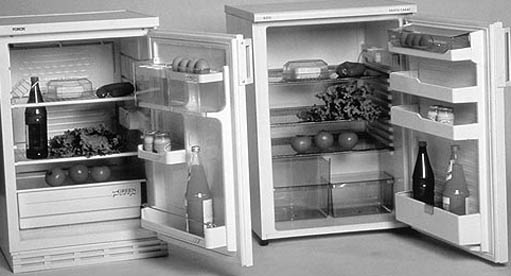3.3 Greenfreeze: the Greens fight back
Some campaigners were not convinced by the arguments of refrigerator manufacturers and suppliers (who also happened to own some patents for HCFCs and HFCs) that the only solution, in the short to medium term, was to use the transitional compounds. They tried to demonstrate that there were practical alternatives. A group of scientists working with Greenpeace International designed a domestic refrigerator based on the use of hydrocarbons, using a mix of propane and isobutane for the refrigerant, and cyclopentane as the blowing agent for foam insulation. They linked up with an East German company, Foron, to produce the first 'Greenfreeze' model and quickly established the principle of HCFC- and HFC-free refrigerators. The arguments from manufacturers about cost, safety, (hydrocarbons are flammable), and efficiency of insulation have mostly been answered now, and in 2003 Greenpeace estimated that 120 million domestic fridges of this type were in use worldwide. The industrialised countries are committed to phase out HCFCs between 2004 and 2020, but not HFCs. HFCs are powerful greenhouse gases (SAQ 1), but do not deplete ozone and are not covered by the Montreal agreement. The European Council has agreed to cut HFCs and the majority of European manufacturers have now turned to hydrocarbons, but not yet their US counterparts.
Until the discovery of the ozone hole few realised the extent to which the modern industrial economy was capable of posing global threats to the environment, especially with what were considered to be the most innocuous materials.
However, I think that the conclusions to be drawn from this first case study are more positive than negative. The response of the international community, though criticised at the time, almost certainly avoided a major catastrophe and its success surprised many of the original participants in the negotiations. Indeed, the international processes and agreements reached over ozone now serve as a model for solving other global environmental problems which require international agreement. And although the threats to the ozone layer and the discussions over implementation of the Montreal Protocol are by no means over, the Greenfreeze episode emphasises that while technologies can be the source of environmental problems, used imaginatively they can also be the basis for environmentally acceptable solutions.

